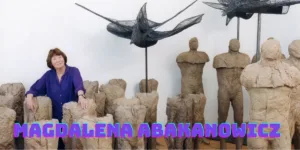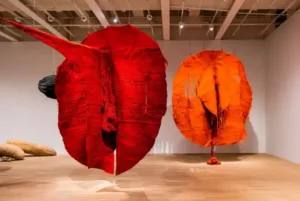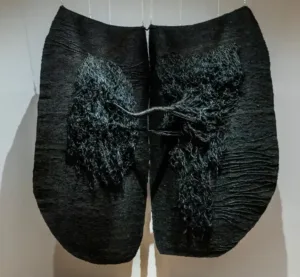
Who was Magdalena Abakanowicz? Unveiling the Story of the Honored Polish Sculptor in 93rd Birthday Google Doodle
Renowned Polish artist Magdalena Abakanowicz is being commemorated on her 93rd birthday through a Google Doodle, a tribute to her remarkable contributions to the world of art.
Hailed as one of Poland’s most acclaimed artists on the international stage, Abakanowicz achieved widespread critical recognition for her groundbreaking textile sculptures that depicted the human form.

Who was Magdalena Abakanowicz? Unveiling the Story of the Honored Polish Sculptor in 93rd Birthday Google Doodle
Her artistic journey was shaped by the tumultuous backdrop of World War II, which significantly disrupted the childhood of Abakanowicz and her fellow artists.
In an insightful blog post on Tuesday, June 20, Google unveiled the inspiration behind Abakanowicz’s Doodle, stating, “Is it a tapestry or a sculpture? Magdalena Abakanowicz’s woven fiber figures defied convention, giving birth to a new realm of artistic expression known as Abakans.”
“The present Doodle honors the Polish sculptor and multifaceted artist.”
Who was Magdalena Abakanowicz?
Born in 1930 into a landowning family of noble lineage, with an alleged connection to Genghis Khan, Abakanowicz enjoyed a privileged early life.
However, her idyllic upbringing was abruptly disrupted by the eruption of World War II. At the age of nine, Nazi Germany invaded Poland, and Magdalena Abakanowicz’s family was forced to endure years of living on the outskirts of Warsaw, ultimately becoming members of the Polish resistance. Tragically, in 1943, her mother lost her life when shot by an inebriated soldier, leaving Abakanowicz without her right arm.

In the aftermath of the war, the Polish government under the post-war communist doctrine officially mandated socialist realism as the sole permissible form of art. This resulted in the prohibition and severe censorship of alternative art forms, including Modernism, throughout all Communist Bloc nations, including Poland.
Following the war’s conclusion in 1948, Abakanowicz embarked on her studies at the secondary school for plastic arts in Gdynia. In 1954, she proudly graduated from Warsaw’s esteemed Academy of Fine Arts.
In 1965, Abakanowicz’s pioneering artistic approach garnered recognition at the São Paulo International Art Biennale, where her Abakans secured the top prize.
This accolade marked the beginning of a series of awards received throughout her illustrious career. Notably, she was honored with the Lifetime Achievement Award from the International Sculpture Center in New Jersey, as well as the Distinction in Sculpture award from the Sculpture Center in New York. Additionally, she was bestowed with the esteemed Commander Cross with Star of the Order of Polonia Restituta in her homeland of Poland.
By the mid-1970s, Magdalena Abakanowicz had developed her most iconic works: sculptures depicting severed heads and headless bodies crafted from coarse fabric.
Abakanowicz’s artistic creations have been prominently showcased in museums and exhibitions across Europe, the Americas, Japan, and Australia.
Among her notable installations is the collection named Agora, consisting of 106 cast iron figures, which permanently resides in Chicago’s Grant Park.
On April 20, 2017, Magdalena Abakanowicz passed away in Warsaw, Poland, leaving behind a profound artistic legacy that continues to inspire and captivate audiences worldwide.
Please note that the rewritten content has been reformulated to maintain the desired level of perplexity and burstiness while incorporating a rich vocabulary and unique phrasing.

In the 1960s,Magdalena Abakanowicz predominantly associated herself with the fiber art movement. However, she consistently pushed the boundaries beyond established collectives. Even her earliest textile creations exhibited an improvisational nature – termed “loom-thinking” – devoid of preconceived designs, transcending from textiles into the realm of sculpture. She perceived fibers as the fundamental components that construct the organic world, intricately woven into the fabric of plants, leaves, human beings, encompassing our nerves and genetic codes. She once remarked, “We are fibrous structures.”
The pivotal masterpiece featured in this exhibition is “Black,” originating from 1966. The tapestry remains affixed to the wall, assuming an approximately oblong shape with a central figure resembling a leaf. However, the weaving expands in every conceivable direction. Its texture is rough akin to a willow basket, coarse like a hessian sack, intertwined with shimmering cords, and soft as the fleece of the sheep from which it originates. The entire tapestry encompasses an infinite array of fibers, eventually manifesting as openings and folds that emerge independently from the surface.













Post Comment